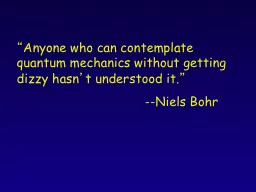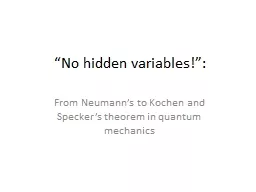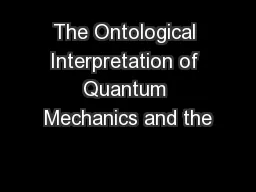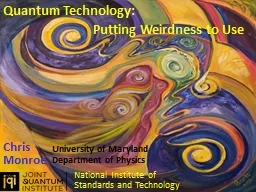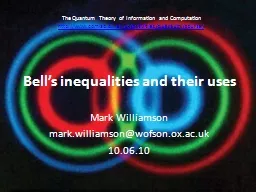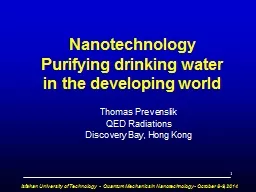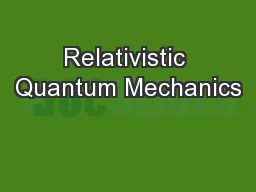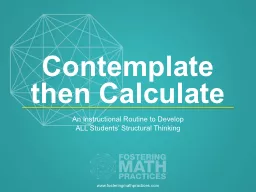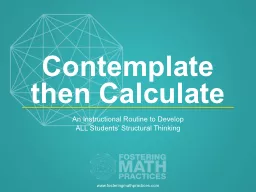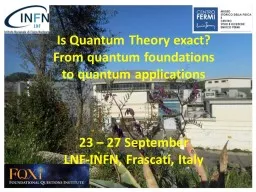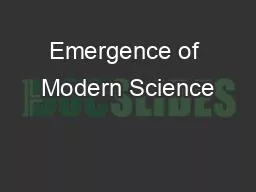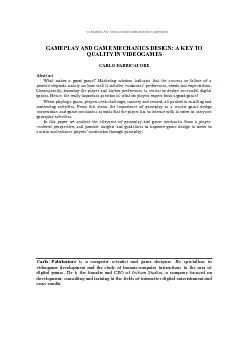PPT-“ Anyone who can contemplate quantum mechanics without ge
Author : giovanna-bartolotta | Published Date : 2018-01-04
t understood it Niels Bohr The Quantum Information Revolution Paul Kwiat DARPA Kwiats Quantum Clan 2012 Graduate Students Rebecca Holmes Aditya Sharma
Presentation Embed Code
Download Presentation
Download Presentation The PPT/PDF document "“ Anyone who can contemplate quantum m..." is the property of its rightful owner. Permission is granted to download and print the materials on this website for personal, non-commercial use only, and to display it on your personal computer provided you do not modify the materials and that you retain all copyright notices contained in the materials. By downloading content from our website, you accept the terms of this agreement.
“ Anyone who can contemplate quantum mechanics without ge: Transcript
Download Rules Of Document
"“ Anyone who can contemplate quantum mechanics without ge"The content belongs to its owner. You may download and print it for personal use, without modification, and keep all copyright notices. By downloading, you agree to these terms.
Related Documents

